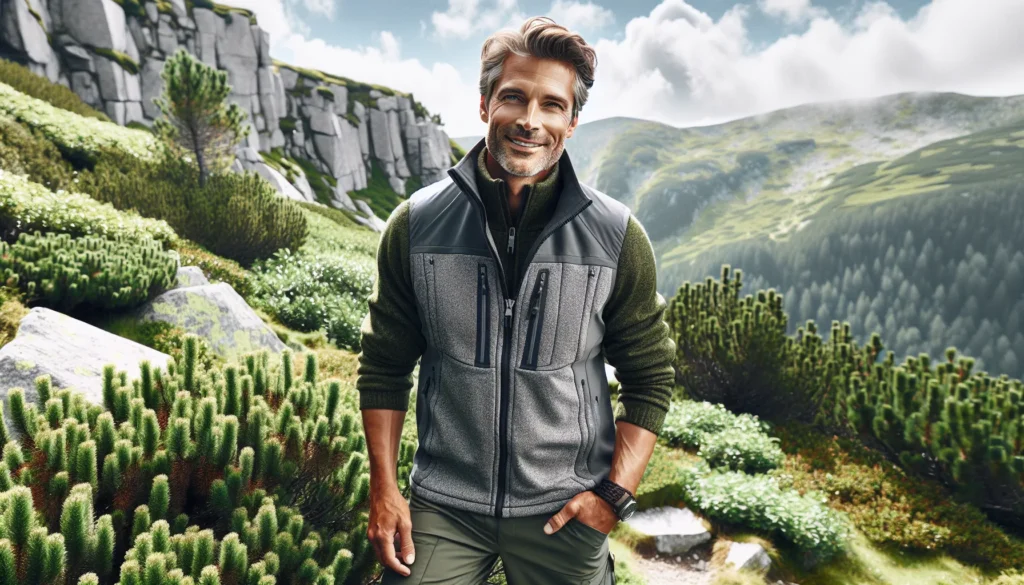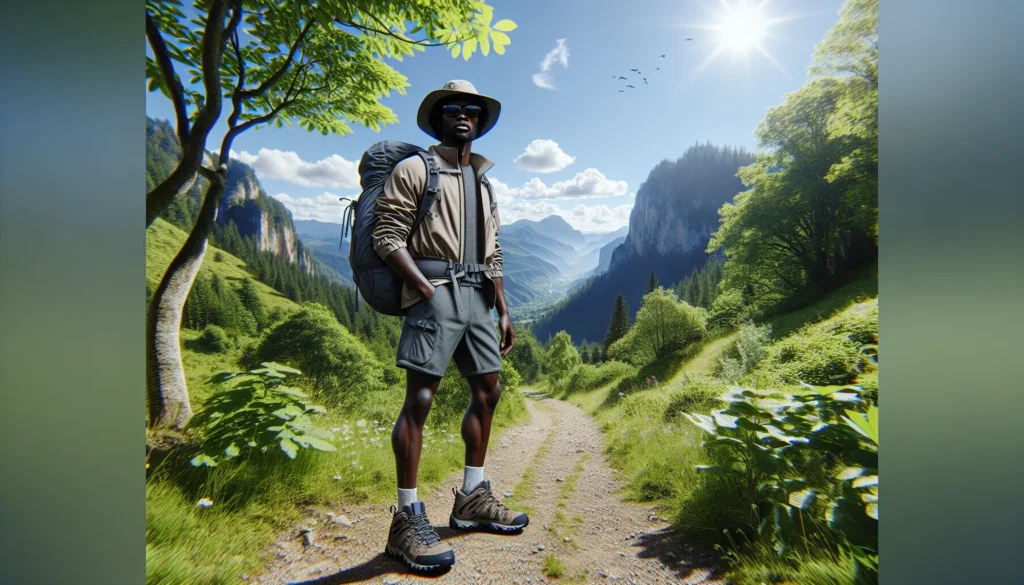Key Takeaways
- Wear moisture-wicking, breathable fabrics like merino wool or polyester to stay dry and comfortable; avoid cotton as it retains moisture.
- Dress in layers—base for sweat management, middle for insulation, and outer for weather protection—so you can adapt to changing trail conditions.
- Choose proper hiking footwear with sturdy soles and pair them with synthetic or wool socks to prevent blisters and ensure comfort on uneven terrain.
- Accessories like hats, gloves, and sunglasses protect against sun, wind, and cold, enhancing your comfort and safety on the trail.
- Always pack a lightweight, weather-appropriate jacket and stay hydrated with a water bottle or hydration bladder to prepare for unexpected conditions.
- Tailor your hiking attire to the season, prioritizing lightweight, breathable gear for summer and insulated, weather-resistant layers for winter.
Hiking’s one of my favorite ways to connect with nature, but let’s be honest—what you wear can make or break the experience. The right outfit isn’t just about looking good; it’s about staying comfortable, safe, and ready for whatever the trail throws your way. From unpredictable weather to rugged terrain, choosing the right gear is key.
Importance Of Choosing The Right Hiking Apparel
Wearing the right hiking apparel helps ensure comfort and safety on the trail. Hiking clothes designed with moisture-wicking fabrics, such as polyester or merino wool, keep sweat away from the skin and reduce the risk of chafing or discomfort. Cotton, on the other hand, retains moisture and can cause dampness in cooler conditions.
Layering is essential to adapt to changing weather conditions. A base layer provides insulation, a middle layer traps heat, and an outer layer protects against wind or rain. Lightweight waterproof jackets are ideal for unexpected rain, while breathable outer layers prevent overheating during strenuous activity.
Proper hiking pants or shorts with quick-drying materials offer better performance than denim jeans. Many options include features like stretchable fabric for unrestricted movement or reinforced knees for added durability. Convertible pants, which zip off into shorts, increase versatility, especially in shifting temperatures.
Footwear directly impacts the hiking experience. Hiking boots with sturdy soles and ankle support reduce the likelihood of injuries on uneven terrain. Trail shoes work well for less demanding hikes, and wool or synthetic socks prevent blisters and maintain dryness better than cotton alternatives.
Accessories like hats, gloves, and sunglasses protect against sun, wind, or cold. A wide-brimmed hat shields the face from UV rays, and gloves with touchscreen compatibility ensure warmth without sacrificing usability.
Layering Your Clothing For Hiking

Layering lets you adapt to unpredictable weather conditions and keeps you comfortable during your hike. Each layer has a distinct purpose, working together to regulate body temperature and protect against the elements.
Base Layers
Base layers sit closest to the skin, managing moisture by wicking sweat away to keep you dry. Materials like merino wool or synthetic fabrics, such as polyester, work best for this purpose. Avoid cotton since it absorbs moisture, leaving you cold and damp. For colder hikes, choose heavier base layers for extra warmth.
Middle Layers
Middle layers trap heat to maintain body warmth. Fleece jackets, down vests, or lightweight synthetics provide insulation while remaining breathable. For high-output activities, a thinner or less-insulated middle layer prevents overheating. Down offers excellent warmth but performs poorly when wet, making it ideal for dry conditions.
Outer Layers
Outer layers shield you from wind, rain, and snow. Waterproof and windproof jackets, often made with materials like Gore-Tex, prevent moisture from penetrating while allowing sweat vapor to escape. Look for jackets with features like adjustable hoods and pit zips for added flexibility. In milder weather, packable windbreakers offer lightweight protection.
Essential Hiking Accessories

Wearing the right accessories improves comfort and ensures you’re prepared for various trail conditions. These items protect against the elements and keep you organized during your hike.
Footwear And Socks
Choosing proper hiking footwear prevents discomfort and injuries. I recommend sturdy boots or trail shoes with good traction to handle uneven terrain. Waterproof shoes are useful for wet conditions, while breathable options suit dry climates. Pairing these with moisture-wicking socks, such as merino wool or synthetic blends, minimizes blisters and keeps feet dry.
Hats And Gloves
Hats and gloves protect against sun, wind, and cold. A wide-brimmed hat or a cap shields your face and neck from harmful UV rays during summer hikes. In cold weather, insulated gloves and a beanie or fleece-lined hat retain warmth while preventing heat loss.
Backpacks And Hydration Gear
Carrying suitable backpacks and hydration gear ensures essentials are accessible. A well-fitted, lightweight backpack with adjustable straps feels comfortable and evenly distributes weight. I suggest packs with compartments for organized storage. For staying hydrated, hydration bladders or water bottles work well, with a minimum capacity of 2 liters for longer trails.
Seasonal Considerations For Hiking Attire

Hiking attire varies significantly based on the season. Staying comfortable and protected while adapting to weather changes is essential.
Summer Hiking
Lightweight, breathable clothing should dominate summer hiking attire. I choose moisture-wicking shirts and shorts or pants made from synthetic or merino wool fabrics to stay cool and dry. A wide-brimmed hat provides sun protection, and lightweight sunglasses shield my eyes from UV rays. I also carry a lightweight, packable rain jacket for sudden summer showers.
Footwear is equally important. I opt for breathable, non-waterproof hiking shoes or trail runners to reduce heat buildup and wear moisture-wicking socks to prevent sweaty feet. Sunscreen and a lightweight neck gaiter protect exposed skin from sunburn.
Winter Hiking
Winter hiking demands proper insulation and protection against the cold. My base layer, made from merino wool or synthetic material, keeps sweat off my skin, while a fleece jacket or down mid-layer provides warmth. I use a waterproof, windproof outer jacket to block cold winds and snow. Thermal pants paired with weather-resistant hiking pants keep my legs warm.
Accessories play a crucial role. I wear insulated gloves, a warm beanie, and thermal socks to retain body heat. Waterproof boots with good tread ensure stability on icy surfaces, and I carry microspikes or crampons for extra grip on snowy or slippery trails. Additionally, I pack a buff or balaclava to protect my face from harsh winter winds.
Tips For Staying Comfortable On The Trail
Comfort is key when hiking, so I focus on practical steps to enhance my experience. I ensure my clothing, gear, and habits align with the demands of the trail.
- Choose breathable fabrics: I go for moisture-wicking materials like polyester or merino wool to keep sweat off my skin. Avoiding cotton prevents me from feeling damp and chilly.
- Dress in layers: I stick to a base layer for moisture control, a middle layer for warmth, and an outer layer for weather protection. This lets me adjust easily to temperature changes.
- Prioritize footwear: I always wear sturdy hiking boots or trail shoes with good traction. Pairing them with wool or synthetic socks keeps my feet warm and prevents blisters.
- Pack extra accessories: I bring a hat for sun or cold, sunglasses for eye protection, and gloves to shield against wind or low temperatures.
- Stay hydrated: I carry a hydration bladder or water bottle so I can drink regularly while hiking. Adding electrolyte tablets helps me stay energized during long hikes.
- Adjust to the trail conditions: I check the weather forecast and pack appropriately. A lightweight rain jacket or a packable windbreaker is always in my gear.
Conclusion
Hiking is so much more enjoyable when you’re dressed for the trail and ready for whatever nature throws your way. The right clothing and gear not only keep you comfortable but also help you stay safe and confident on your adventure.
Every trail is different, so it’s worth taking the time to prepare thoughtfully. Whether it’s sunny, snowy, or somewhere in between, being mindful of your outfit and accessories can make all the difference. Happy hiking!
Frequently Asked Questions
What is the most important factor when choosing hiking clothes?
Comfort and functionality are the two most important factors. Opt for moisture-wicking fabrics like polyester or merino wool to manage sweat, and layer your clothing to adapt to changing weather conditions. Avoid cotton as it retains moisture, which can lead to discomfort.
Why is layering important for hiking?
Layering helps you adapt to changing weather. A base layer wicks sweat, a middle layer provides insulation, and an outer layer protects against the elements like wind, rain, or snow. Proper layering ensures comfort and safety during your hike.
What materials are best for base layers?
Merino wool and synthetic materials like polyester are the best options for base layers. These fabrics wick sweat away from the skin, keeping you dry and comfortable during hikes, unlike cotton, which retains moisture.
What should I wear for summer hiking?
For summer hikes, wear lightweight, breathable clothing such as moisture-wicking shirts and shorts. Don’t forget sun protection, including a wide-brimmed hat, sunglasses, and sunscreen to shield yourself from UV rays.
What’s the ideal outfit for winter hiking?
Winter hiking requires insulated outfits. Wear a merino wool or synthetic base layer, a fleece or down middle layer for warmth, and a waterproof outer layer. Add insulated gloves, a warm beanie, and waterproof boots for full winter protection.
How should I select hiking footwear?
Choose hiking boots or trail shoes with sturdy soles, good ankle support, and proper traction. Opt for waterproof footwear in wet conditions and breathable models for dry weather. Pair with moisture-wicking socks to prevent blisters.
What accessories are essential for hiking?
Key accessories include a hat for sun or cold protection, gloves for warmth, sunglasses to protect your eyes, and a lightweight backpack for storing essentials. Pack hydration gear like a water bottle or hydration bladder to stay hydrated.
Can I wear cotton for hiking?
Avoid cotton for hiking as it retains sweat and dries slowly, leaving you uncomfortable and prone to cold in chilly conditions. Stick to moisture-wicking materials like merino wool or synthetic fabrics for optimal comfort.
How can I stay hydrated while hiking?
Carry enough water using hydration bladders, bottles, or a combination of both. For long hikes, bring electrolyte tablets to replenish lost salts. Ensure you drink water at regular intervals to avoid dehydration.
Should I consider weather conditions when picking hiking clothes?
Yes, always consider the weather. For hot climates, wear breathable, UV-protective clothing. In cold conditions, focus on insulation and waterproof layers. Check forecasts and adjust your gear accordingly for optimal comfort and protection.

